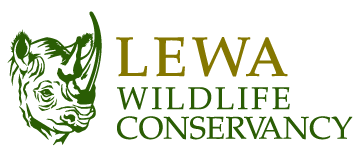The Lewa Research and Monitoring section collects continuous data on the conservancy that allows evaluations of trends in ecosystem health. This is done through two main approaches: Monitoring, which allows us to answer the ‘what’ question about the trends in wildlife and vegetation on the landscape, and Research, which helps us answer the ‘why’ these trends are occurring. To effectively deliver on this mandate, the department collects data in various fields that we refer to as thematic areas. Below we briefly outline these thematic areas and the main questions they seek to answer.
| Lewa
Rhino Monitoring
Our department works closely with field rhino monitors from the general security department, collecting data on rhino births, deaths, and movements. This allows us to identify demographic trends and changes over time, as well as helps us create individual home range and distribution maps. By keeping these data and analysing the cause and effect relationships with other environmental and man-made changes, we can then present information to management about appropriate density and competition levels on our landscape.
| Lewa
Predator Monitoring
Predator-prey dynamics are an important part of ecosystem balance. Our team collects data on the numbers and distribution of our large carnivores, tracking not only birth and death rates but also prey preferences across the year. By following specific individuals using field rangers and telemetry collars and by setting up camera traps in strategic locations, we are able to develop a better sense of both inter- and intra-species relationships.
By analysing kill sites and scat, we are then able to determine what species are being preyed upon and in what proportion to their abundance on the landscape. This information is then presented to management, informs the development of strategic interventions, and directs further areas of research.
| Lewa
Ungulate Monitoring
Ungulates, or hooved mammals, make up the bulk of Lewa’s prey base. Among them are several threatened and/or endangered species, including the Grevy’s zebra, Lelwel’s hartebeest, and the Reticulated giraffe. The landscape is also home to a significant number of buffalo, eland, impala, and oryx.
Our ungulate monitoring team collects monthly data on a select group of indicator species that give us an idea of the general health of the landscape based on its ability to support these animals. By monitoring population structure, landscape usage, and body condition, we are able to identify any large-scale and widespread changes in the population dynamics of these animals that would indicate an underlying ecosystem change. Our ungulate monitoring team therefore provides critical information that allows us to understand both predator-prey dynamics and ecosystem health.
| Lewa
Elephant Monitoring
Elephant numbers have been on the increase across northern Kenya thanks to successful anti-poaching policy and security efforts. However, as land use cover and land use are increasingly changing due to population expansion and climatic pressures, maintaining corridors of movement for wildlife is necessary to reduce human-wildlife conflict. In collaboration with many partners, we are able to track elephant movements through satellite collars and ground teams. As poaching incidents have gone down, human wildlife conflict cases have inversely increased. The Lewa elephant monitoring team collects data on cases of elephant conflict on our boundaries as well as inside the conservancy. By identifying specific individual offenders and their strategies, we are able to develop targeted responses ranging from fence redesign, use of novel technologies like bee-hive fences, and in the most extreme of cases, translocation to other less crowded landscapes. Our monitoring is critical for understanding the different family groups and individual elephants on the landscape. Our research then allows us to identify suitable interventions that help maintain Lewa’s position as a critical connection between Mount Kenya and Samburu ecosystems while reducing human-elephant conflict on our own landscape.
| Lewa
Rangeland Monitoring
A healthy forage base is the cornerstone of any wildlife population. Sufficient forage not only ensures an abundant herbivore population, but also ensures a healthy carnivore population as well. Our research and monitoring team has been carrying out annual surveys on select plots across the conservancy, measuring vegetation composition, biomass, and cover, among other metrics. The purpose of these annual surveys is to provide a year to year comparison of forage abundance and distribution, thereby assessing impacts of management, wildlife, and weather variability on rangeland condition. The Lewa Research team is also responsible for assessing the use of vegetation management strategies like cattle grazing and mowing and making management recommendations based on the findings of these assessments.
| Lewa
Avifauna Monitoring
Birdlife is generally considered as an important ecosystem indicator functional group since birds are highly responsive to environmental change. Monitoring bird populations is useful in assessing their status, helping to determine conservation priorities, and detecting whether species are responding to management activities. Lewa acts as a key habitat to many bird species, of which some like the Grey Crowned Crane are globally threatened. It is also an important stop-off point for some migratory birds, especially Palearctic Migrants, and is an important wetland area that is an attraction and feeding ground to many bird species. Our Research team conducts monthly surveys of waterbirds, as well as raptors. In addition, we populate, verify, and maintain a checklist of birdlife in the landscape, working with partners like Nature Kenya and the National Museums.
| Lewa
Hydrology Monitoring
One of the biggest challenges facing natural resource managers in Sub-Saharan Africa is provision of water resources. Kenya is limited by an annual renewable fresh water supply and is classified as a water-scarce country. As such, access to clean water remains a challenge for wildlife and communities in Northern Kenya, as well as around the Lewa-Borana Landscape. Thorough evaluation of the water resources in the area is needed to develop the scientific understanding on which sound management decisions can be made. Lewa Wildlife Conservancy has undertaken a Hydrological Monitoring and Evaluation Initiative across the region to better understand regional and local water resources, identify risks facing these, and develop tools to better understand how to manage them to ensure the future viability of the LBL greater ecosystem. Initial funding from The Bently Foundation is allowing us to install the first automated monitoring stations of flow speed and discharge on the Ngare Ndare and Sirikoi rivers, as well as standardize weather monitoring installations across the landscape.
| Lewa
Collaboration
Given the breadth and scope of research questions that arise on a landscape as varied and productive as the Lewa-Borana Landscape, it is often the case that external partners are required to help understand our ecosystem better. We have built long-running collaborations with several Universities and Research Institutions around the world, providing a field site for undergraduate, Masters, PhD students, and Post-Doc fellows to conduct their research. This opportunistic work complements the Research Department’s work and has helped build a library of reference resources for current and future land managers.

